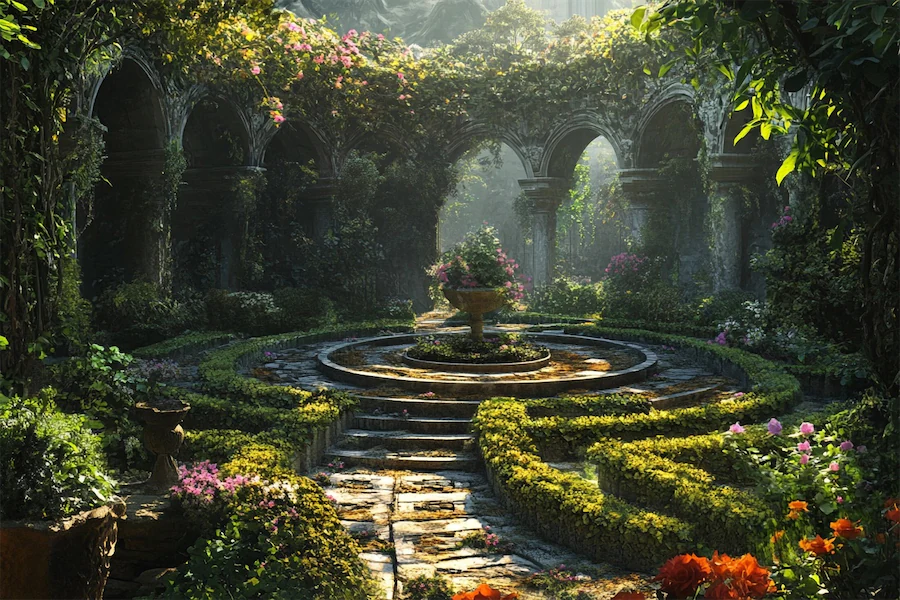A Labyrinth Garden is a thoughtfully designed outdoor space featuring a single, non-branching path that leads to a central point and back out again. Unlike mazes, which are designed to confuse with multiple paths and dead ends, labyrinths offer a clear route, promoting reflection and meditation.
History and Origins of Labyrinth Gardens
The concept of the labyrinth dates back to ancient civilizations. The term “labyrinth” was used by the ancient Greeks and Romans to describe complex structures with intricate passageways and blind alleys. Over time, labyrinths were incorporated into formal garden designs, especially from the European Renaissance onward, consisting of intricate paths separated by high hedges.
In medieval Europe, labyrinths were often used for spiritual purposes, symbolizing the journey of life and serving as tools for meditation and reflection. The design of formal geometric gardens in this period often included mazes and labyrinths, reflecting the era’s fascination with order and symmetry.
Key Features of Labyrinth Gardens
- Unicursal Path: A single, winding path that leads to the center and back out, facilitating contemplation and mindfulness.
- Symmetrical Design: Often circular or spiral layouts that provide a sense of balance and harmony.
- Natural Materials: Paths outlined with stones, hedges, or low-growing plants to define the walkway.
- Central Focal Point: A feature such as a sculpture, bench, or water element at the center to encourage pause and reflection.
Applications of Labyrinth Gardens
- Therapeutic Spaces: Used in hospitals and wellness centers to promote healing and stress reduction.
- Public Parks: Incorporated into urban green spaces to provide residents with areas for relaxation and meditation.
- Private Gardens: Homeowners create labyrinths to enhance their landscapes with elements of tranquility and introspection.
Considerations When Designing a Labyrinth Garden
- Space Requirements: Ensure sufficient area to accommodate the labyrinth’s dimensions while allowing for comfortable navigation.
- Pathway Materials: Choose durable and permeable materials like gravel, grass, or pavers that blend with the surrounding environment.
- Maintenance: Regular upkeep, such as trimming hedges or weeding paths, is necessary to preserve the labyrinth’s form and function.
- Accessibility: Design paths wide enough to accommodate all users, including those with mobility aids, to ensure inclusivity.
Conclusion
Labyrinth gardens offer a unique blend of historical significance and contemporary relevance, serving as spaces for meditation, healing, and aesthetic enjoyment. By thoughtfully integrating a labyrinth into a garden setting, one can create a serene environment that invites introspection and fosters a deeper connection with nature.
